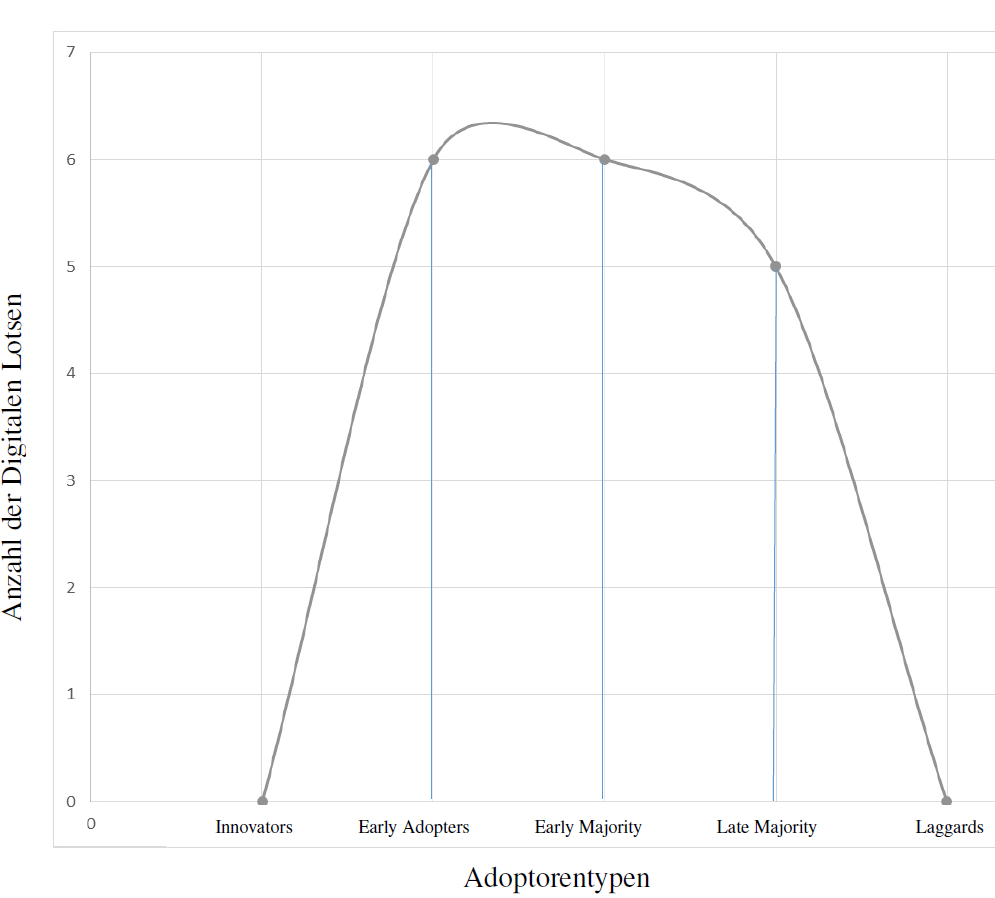
Digital Guides of the City of Konstanz
Philipp Erdmann
Abstract
In recent years, public administrations have set themselves the goal of becoming more digital, transparent, and citizen friendly. In order to bring digital thinking and acting into the public sector, the project "Digital Guides of the City of Konstanz" was launched in spring 2019. This research project examines the fundamental differences in the expectations of administrative staff toward digital innovation. The aim is to find out to what extent the expectations of innovation differ among public servants and what significance digitization has for them. The analysis focuses on four dimensions: expectations, requirements, barriers, and experiences, which comprise the core statements of the interviewed public servants.
Context
In November 2018, the German state of Baden-Württemberg determined that by August 2020, approximately 1,600 digital guides in public administrations need to be trained (Ministerium für Inneres, Digitalisierung und Migration, 2018). The city of Konstanz anticipated this idea and started the project independently from the state's timetable. The city of Konstanz will use the digital guides in two ways: on the one hand, the 23 digital guides will act as co-designers in digitization projects by providing input for concrete projects. On the other hand, digital guides will be trained as disseminators and will carry the knowledge and projects they have learned into the city offices. The aim is to sensitize and motivate other employees to support the topic and to help shape digital thinking and acting toward a cultural change. This research intends to generate new patterns of expectations of the employees before the start of an innovation project and to establish new ways of thinking.
Method
The participants of the project "Digital Guides of the City of Konstanz" were interviewed using qualitative interviews (Flick, 2017). Of the 23 participants, 16 agreed to take part in an interview. Three of the participants had already left the project and did not have a successor at that point in time, and another four people cancelled due to time constraints. One more person joined the project because an interview with a still existing digital guide and his successor took place. Different perspectives were given because all interview partners worked in departments in the city of Konstanz and held very different positions. The interviews were then transcribed and encoded (Saldaña, 2013). Further, the group was examined regarding the five innovation adopters according to Rogers (2003).
Results
Expectations
The expectations of the interviewees for the project are predominantly very positive, although critical concerns were also expressed. As a result of the interviews, it became clear that the project must add value and that people are motivated to change the city toward a digital mindset. It is also expected that those involved will be able to actively participate in the transformation and help shape change. Other digital guides found it difficult to name specific expectations at this early stage, because the project only started a few months ago.
Requirements
Additional time resources were highlighted as an important factor for a positive implementation of the project. Most guides wish not to neglect their daily work while concentrating on the project. The digitization efforts at the municipal level are generally seen as a positive development, as all employees must be taken along - but this requires functioning communication. In addition, demands are toward the development of ethical values of the administration, since public administration is very different from a commercial enterprise.
Obstacles
Among the interviewees, the fear of change was frequently mentioned. Innovation projects should not be engineered top down, as a major change also brings with it the danger that individual employees feel overwhelmed. A further hurdle is seen in the planning phase, since a lot of time often until the actual implementation happens. One interviewee also raised concerns about digital manipulation, as information is obtained more quickly, and digitalization makes it more difficult to distinguish true from false information.
Experience
Many respondents described their experiences with similar projects in which there are usually people who accept innovations faster than others. In addition, it became apparent that the factors fear and time play a role. Nevertheless, the success of a project would usually mean that an innovation would be viewed positively. Furthermore, one person talked about the fact that their own personal way of thinking about digital changes has changed to the extent that they are more open to new things than in the past. Another person claims the opposite, namely that they have become more critical over time and, like many other respondents, expressed concerns about data protection and security.
Types of innovation
Rogers (2003) defines five different types of adopters of innovation. “Innovators” are the first adopters, who are characterized by a high-risk tolerance and tolerance of uncertainty. “Early Adopters” play a greater role in the implementation of innovation, as they are the first to give a realistic picture of the innovation and can involve other social groups. This is followed by the "Early Majority" and together with the “Early Adopters” the first half of the adopters is completed. The "Late Majority" is rather reluctant to consider innovations and usually only accepts innovations when the pressure becomes too strong to miss the change. As the latest and last members in this model, the “Laggards” adopt an innovation - they are very critical, rarely socially involved and strongly oriented towards the past.
Figure 1 attempts to fit the digital guides of Konstanz into the adopter categories. Six of the 17 people can be categorized as early adopters and early majority (35.3% each) and five as late majority (29.4%):

Theoretical & practical implications
As a result of the interview, it became clear that the planning of the digital transformation project plays a major role. To avoid fear of change and its rejection, the change process must be well planned, and all employees must be involved – at a minimum through frequent communication (Rafferty & Restubog, 2010). It is also important to many digital guides that the project benefits the whole city and not just add personal value. Efficiency, effectiveness, but also time play a decisive role here. The large share of the "Late Majority" group (29.4%) indicates that the approach could have a negative impact on the promotion of digitization among civil servants in the city of Konstanz. The critical thinking of some of the guides may be an obstacle to the city of Konstanz' plans. The project managers should plan the next steps early enough and ensure that the project participants receive time off to carry out the project work without any additional effort on their part.
Key Points
The results show that the expectations regarding requirements and hindrances differ between the respondents. In general, the expectations of all respondents are positive for the project. Nevertheless, negative components can occur if the requirements and hurdles are not considered. These requirements are of technical and financial nature, but also include time resources. Furthermore, the interview results show that sufficient communication is needed between the project managers and the digital guides, but also between the guides and the rest of the organization. It also shows that it can be difficult for the guides to act as multipliers for the digital changes in the different resorts in order to influence their colleagues convincingly. Digital affinity or not, all employees need be part of the digitalization process.

Philipp Erdmann:
Philipp Erdmann completed his bachelor’s degree in political science and public administration in spring 2019. The topic of his final thesis was "Digital Guides in Public Administration". During his studies, his research interests focused on the possibilities of digitalization and user-centered research. He is currently in the master's program of human resource management at the international university IUBH. His research focuses on topics related to personnel development, human resource management, and change management.
